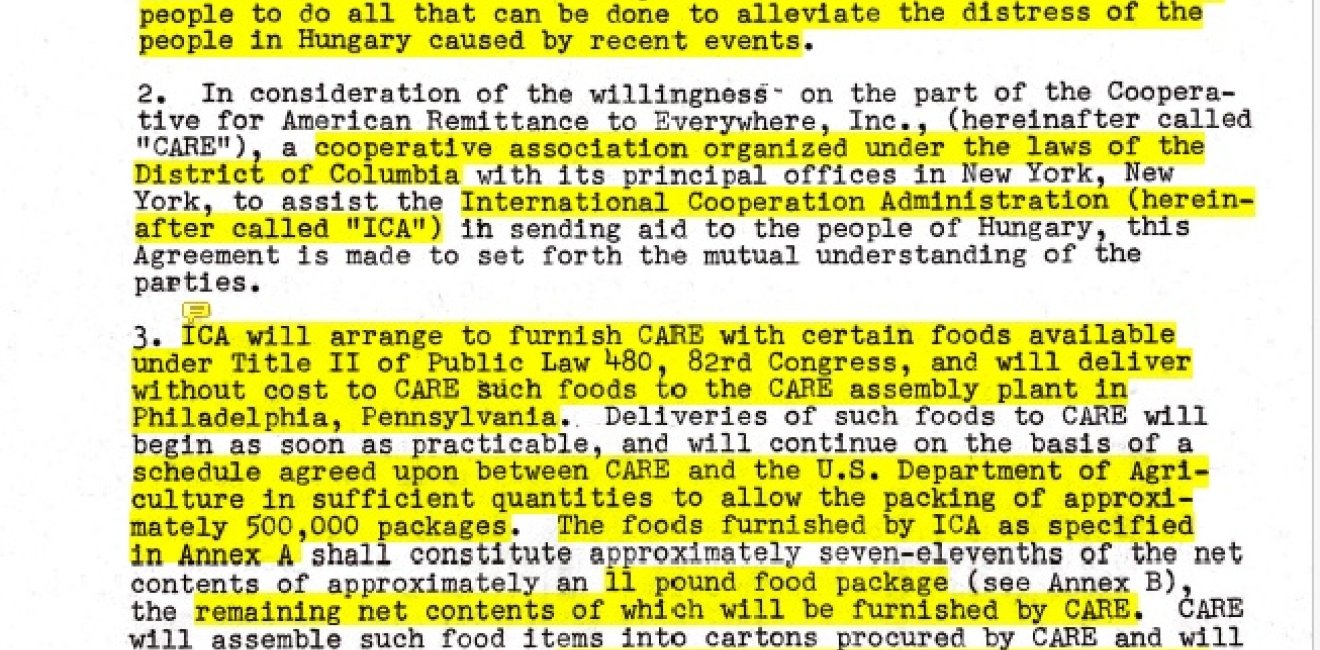The 1956 Hungarian uprising and the subsequent installation of a pro-Soviet government in Budapest pushed hundreds of thousands of refugees into neighboring countries.
In early November 1956, over 200,000 refugees set out on foot in the harsh winter with few possessions and headed for the Austrian border. The Austrian government quickly found itself overwhelmed and reached out to the west for assistance. For humanitarian organizations like CARE, the crisis offered an opportunity to prove its organizational flexibility and its capacity to handle the needs of a large refugee population. It also presented new challenges brought on by the demands of refugees and the logistical difficulties of working in such a tumultuous and fast moving political landscape.
CARE arrived in Austria in the winter of 1956 as one of many relief organizations interested in providing assistance. It was best known for its packages, which were handed out in large quantities but were quickly deemed inadequate or redundant.
Two thirds of the refugees were men, with women and children making up the remainder. CARE discovered that while the needs of the men were largely being met, there were insufficient supplies at hand for the women and children who were arriving at the border. In an interesting dynamic of “cooperative competition” with other government and non-government aid agencies, CARE worked to fill the gaps.
One memorandum in particular shows this effort, as blankets and other items, which were already being provided by others, were deprioritized.[1] CARE, instead, began to issue welcome kits, intended to meet the immediate needs of newly arriving refugees. They organized locally purchased shoe deliveries for female Hungarian refugees along with pajamas, knitting tools, and school supplies so that Hungarian children could get back to the classroom.
This document also shines a light on the difficulties and intricacies of navigating the bureaucratic side of humanitarian relief. Working under the umbrella of the newly created International Cooperation Administration, the US Department of Agriculture delivered to CARE’s Philadelphia assembly plant enough goods to build 500,000 packages, which then had to be transported to Vienna on US military vessels and then handed to the Red Cross for distribution. After some wrangling, CARE and the Red Cross would both have a stamp on each package, showing who had delivered the goods.
[1] Letter of Agreement between the International Cooperation Administration and CARE, March 22, 1957, Series 2 Program Department, Subseries 2.5 Country projects, Europe 1952-1957, Box #202, CARE records, Manuscripts and Archives Division, The New York Public Library.





